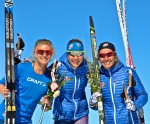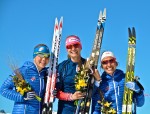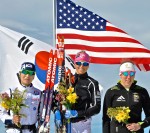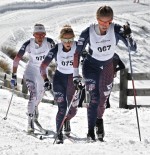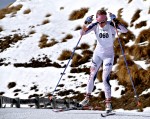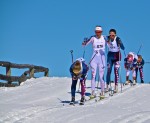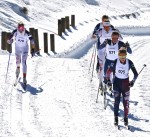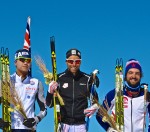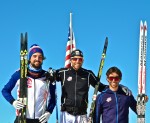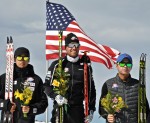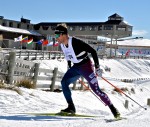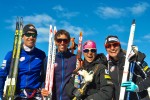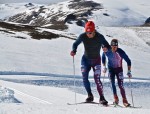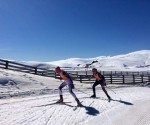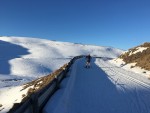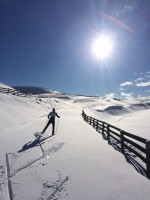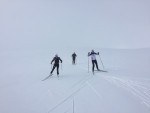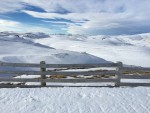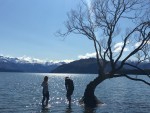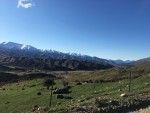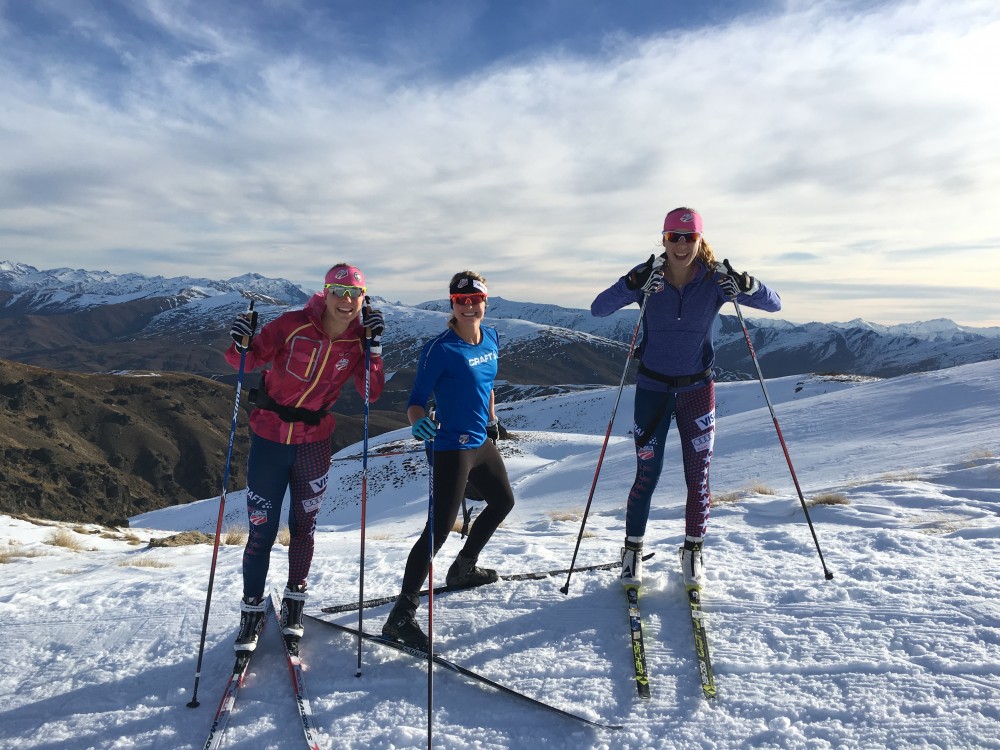
Four inches of snow on one day, gray storm clouds and drizzling rain the next, followed the day after by blue skies, sunshine, and groomed trails of corn-snow. When it came to this year’s forecast for the U.S. Ski Team’s (USST) on-snow camp in Snow Farm, New Zealand, the weather was anything but consistent.
For many American athletes and coaches who spent Aug. 30 to Sept. 14 training on the southern end of the country’s South Island, however, the inconsistency in weather was warmly welcomed.
“New Zealand is the perfect place to work on technique!” Stratton Mountain School (SMS) T2 skier Erika Flowers, who joined the USST for its 16-day camp, wrote in an email. “The conditions change daily so we also had the opportunity to ski in many different conditions (think fluffy dry snow, pouring rain, wind, sun, icy, soft, slushy, and even some perfect corduroy) and practice adjusting technique based on weather, snow, terrain, etc. ”
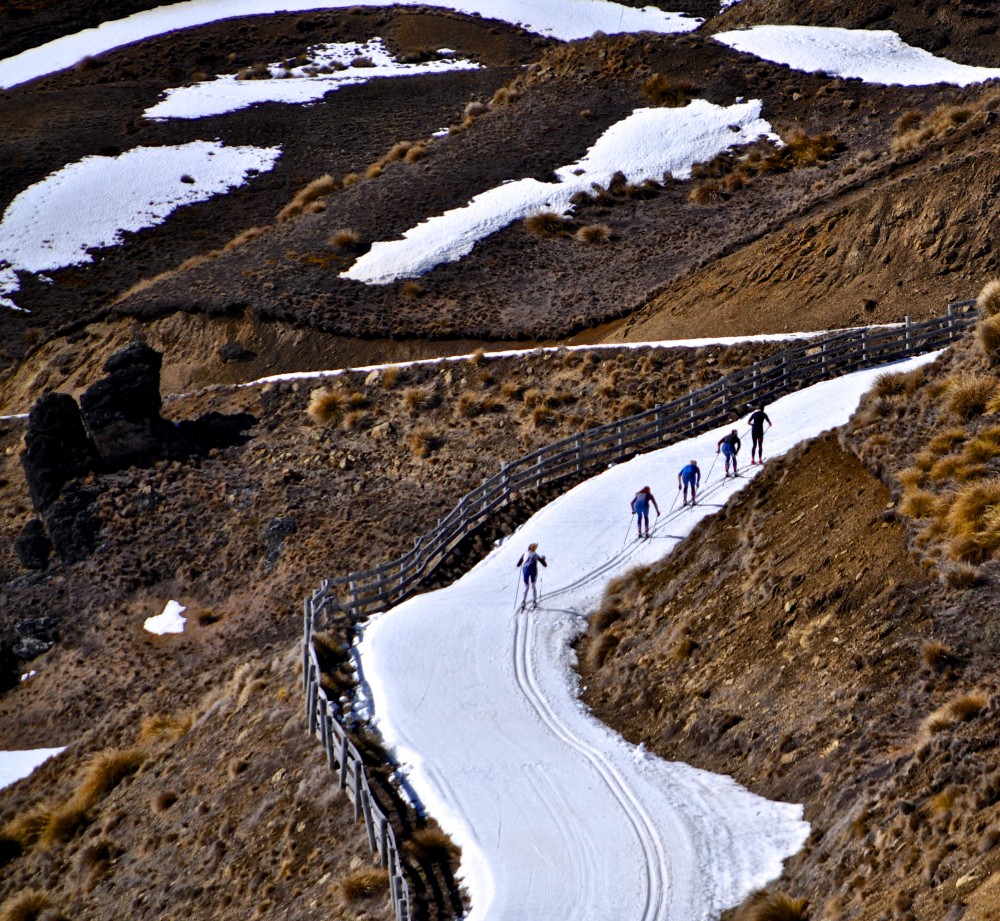
It was not just opportunity to practice skiing in varying conditions that made Snow Farm — one of the USST’s favorite summer training destinations since 2002 — once again a top pick to return to. In her second visit to the Snow Farm, current USST member Jessie Diggins described the area as also having the perfect mix of training terrain.
“I absolutely love this training camp,” Diggins wrote in an email. “It’s amazing skiing with 35km of groomed tracks, really fun crust skiing since it’s springtime here, and the terrain includes all the elements I like to work on: steep climbs, rolling tracks, turning downhills!…I don’t think the travel is actually much worse than going to Europe because once I get here, I adjust quickly every year and jump right into quality training!”
Including Diggins and Flowers, a total of 10 athletes ventured to the Snow Farm with the U.S. team. Ida Sargent, Sophie Caldwell, Liz Stephen, and development-team member Katharine Ogden made up the rest of the women’s contingent, and U.S. men’s team veterans Andy Newell, Simi Hamilton and Noah Hoffman trained with SMST2 skier Ben Saxton.
While Flowers and Saxton are not current USST members, U.S. head coach Chris Grover explained the team invited them to the camp.
“We don’t create selection criteria for non-USST athletes to join camps; we simply invite athletes to join camps when we feel they will add quality training partners to the group, the camp will benefit their own development and help them get better, and we have the space and resources to accommodate them,” Grover wrote in an email.
At New Zealand National Cross-Country Ski Championships, which took place Sept. 9-11 at the Snow Farm, Saxton raced to second in the 15-kilometer classic mass start and third in the classic sprint final. He described being appreciative of the chance to not only get so much time on snow, but spend that time with training partners who can push him.
“While I’m taking the performance results of the camp as positive indicators of where my fitness is at right now, I know there’s a lot of work left to be done before we get on snow in Bozeman [at the U.S. SuperTour opener] this fall,” Saxton wrote in an email. “I was also very pleased with the technique work I got to do in camp. Being on snow is just so different than roller-skiing and I have so much to work on technically, that getting the chance to work behind World Cup athletes in unique and occasionally unstable snow conditions was, for me, a tremendous opportunity.”
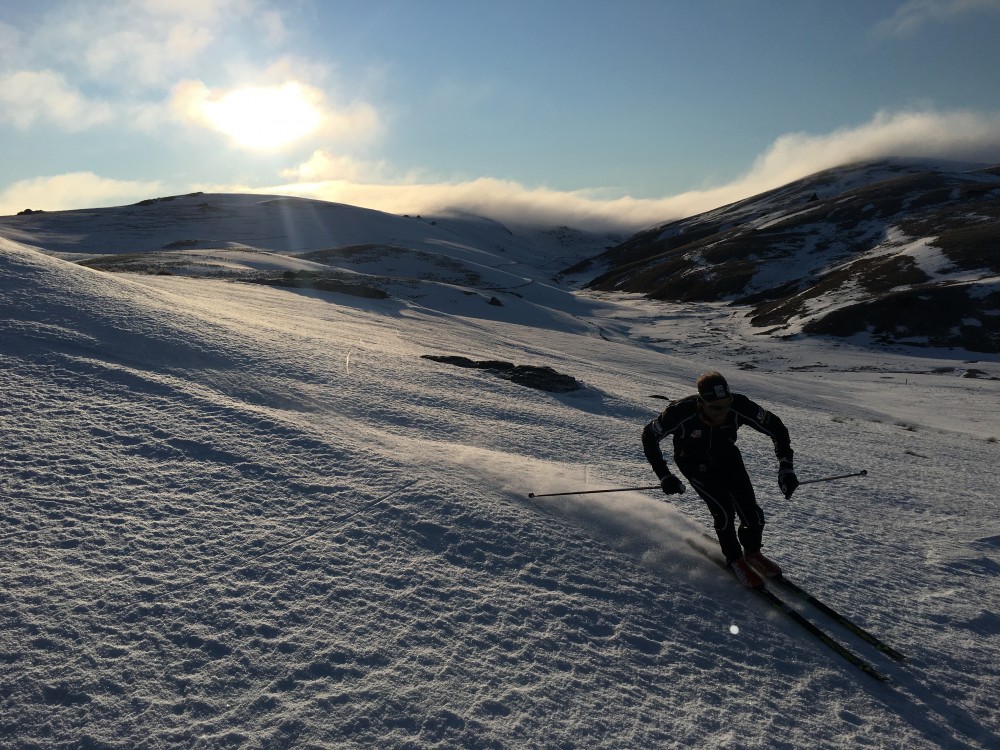
The winner of both the men’s sprint and 15 k classic mass start was Newell, Saxton’s SMST2 teammate. Hamilton (also of SMST2) won the 10 k freestyle individual start and Hoffman placed third the 15 k classic mass start.
“The sprint, as normal, was a bit of a struggle and the classic race, I’ve always struggled at this time of year really putting down solid race efforts,” Hoffman, a distance skier, said on the phone from Park City, Utah. “I’m impressed with [Andy’s] form. He just easily skied away from me and Ben in the last kilometer or so of that race.”
The weekend prior to New Zealand nationals, Hoffman won the Merino Muster 42 k freestyle marathon on Sept. 3. He explained that while his training load has been considerably higher this year, his body has been able to adjust fairly well so far.
“[The 42 k race] came early in the camp so I didn’t feel super comfortable on my skis at that point, but it was a fun opportunity,” Hoffman said. “Simi raced as well and we got to ski together almost the entire race. It was in the last 2 k we were able to race against each other. That was good practice for me. That’s the part of the race that I need to be able to accelerate and be able to really lay it on the line in the World Cup.”
Hamilton finished 23 seconds behind Hoffman in second place, while Diggins took third overall and won the women’s race. Twelve seconds behind her, Stephen was the second woman in fourth overall.
“Not all of the team was ready for a 42k race that close to travel at the beginning of a camp, so we had half of the team do some lighter threshold in preparation for the FIS [New Zealand nationals] races the following weekend,” U.S. women’s coach Matt Whitcomb wrote in an email. “We talked with the racers – Simi and Noah, as well as Jessie and Liz, about skiing together at a comfortable race pace. We wanted them to take turns leading, to practice pulling as well as drafting, and to not tap the body too deeply so early in the camp. But at the end, everyone agreed to let each other have it in the final part of the race – no hand-holding across the finish line. Noah and Simi hit full-gas at 40k, and Jessie and Liz waited until the 500 meters-to-go mark.”
Both Stephen and Diggins also reached the podium the next weekend at New Zealand nationals, which doubled as Australia/New Zealand Cup races. Diggins took second to Sargent in the classic sprint, and Caldwell placed third. Diggins then took first in the women’s 10 k classic mass start ahead of Sargent in second and Caldwell in third. Stephen won the final women’s event of the weekend, the 5 k freestyle individual start.

While the USST left with quite a few podium finishes, Grover explained the primarly goals of the camp were not race results, but race starts and time on snow.
“The primary goal was extended time on snow working on group and individual technique needs,” Grover wrote. “Another goal of the camp was to touch base with racing. Besides the Merino Muster, we had 3 AUS-NZ COC [Continental Cup] races. All athletes had between 2-4 starts.”
For athletes like Ogden, it was the chance to get race starts on snow without feeling pressure to perform that allowed her to focus on her technique and form during the camp.
“I think that it was very valuable for my technique having a focused on snow block without the pressure of important races,” she wrote. “As for fitness I’m pretty happy with where I’m at, it was awesome to get some volume in and get to train with some older, more experienced athletes.”
Ogden also competed in the first two races of the New Zealand nationals and placed fourth in both the classic sprint and 10 k classic mass start. She wrote she was “really happy” with her efforts in both races “optimistic about the upcoming season.”
After arriving back in the U.S. last Thursday, most of the NZ camp athletes planned to spend a few days recovering before training at full steam again. The USST’s next camp is Oct. 17-31 in Park City, where most of its athletes will take part in high-elevation, dryland training. This year, the team opted out of its annual camp in Lake Placid, N.Y., which typically takes place in September and offers dryland training around sea level.
“This year we dropped one camp from the schedule (total 4 camps) in order to prioritize high-quality camps followed by solid blocks of training for each athlete at home with their club teams,” Grover wrote. “We have at least 4 weeks at home for each athlete between camps. I can’t remember the last time we didn’t have a camp in Lake Placid; I’ve personally been there the last 10 years in a row. It’s a great training location and we love going there, so we will be back there in the future. It simply didn’t fit this preparation period.”
New Zealand nationals results: Classic sprint (women, men) | women’s 10 k classic mass start | 15 k classic mass start | women’s 5 k freestyle | men’s 10 k freestyle
Merino Muster (Worldloppet) results: Men | Women (Complete results)
— Alex Kochon contributed reporting
Gabby Naranja
Gabby Naranja considers herself a true Mainer, having grown up in the northern most part of the state playing hockey and roofing houses with her five brothers. She graduated from Bates College where she ran cross-country, track, and nordic skied. She spent this past winter in Europe and is currently in Montana enjoying all that the U.S. northwest has to offer.

